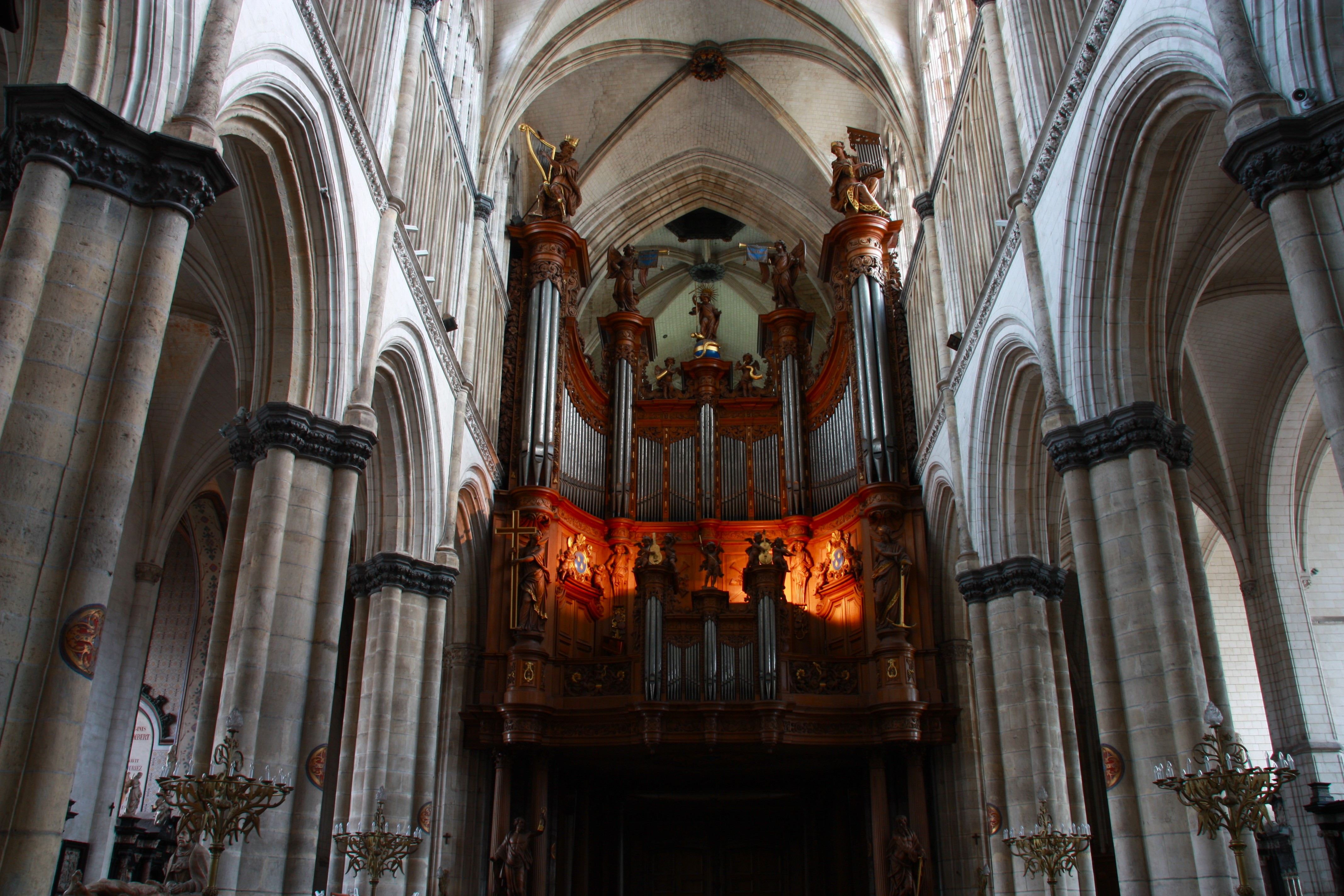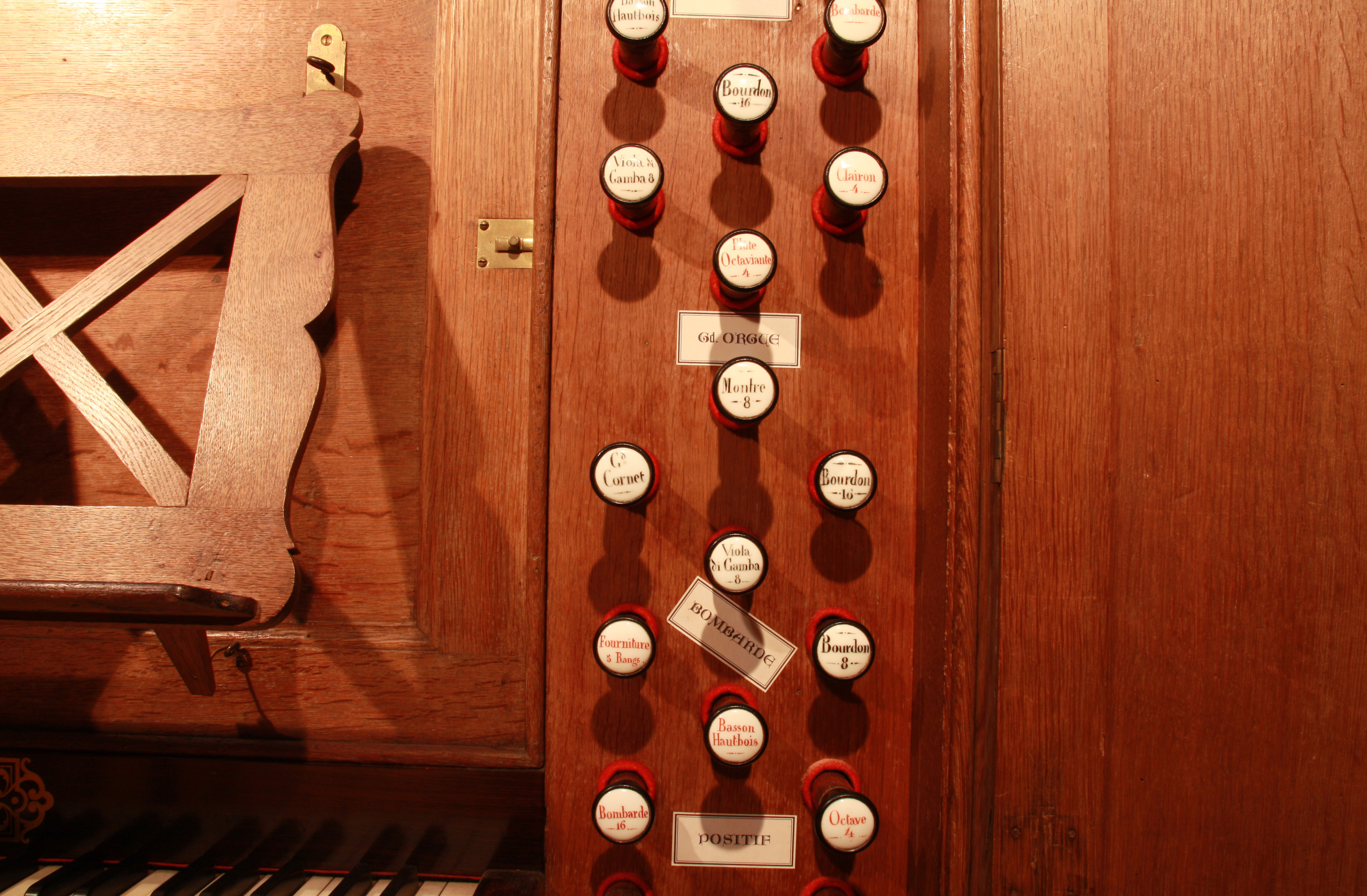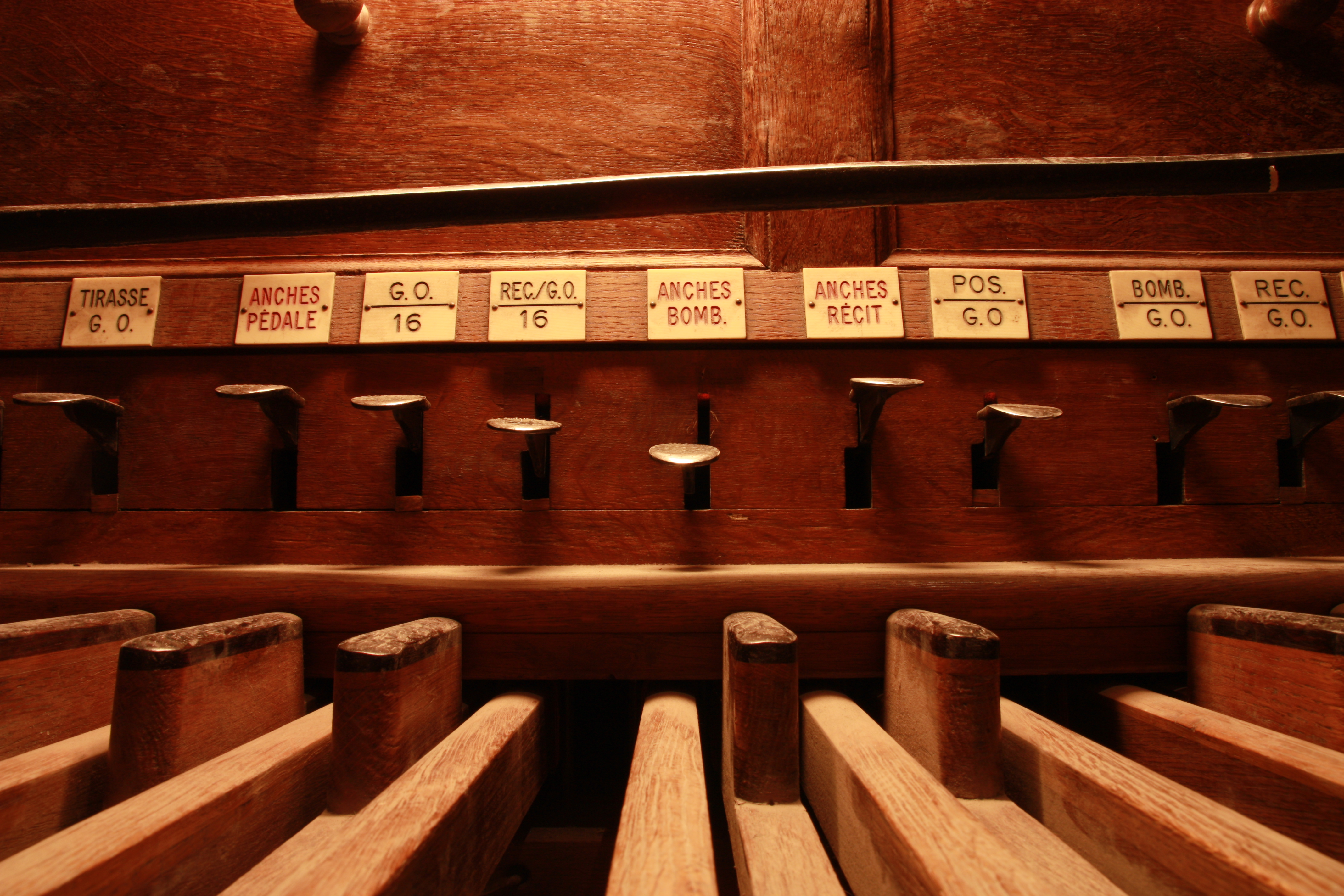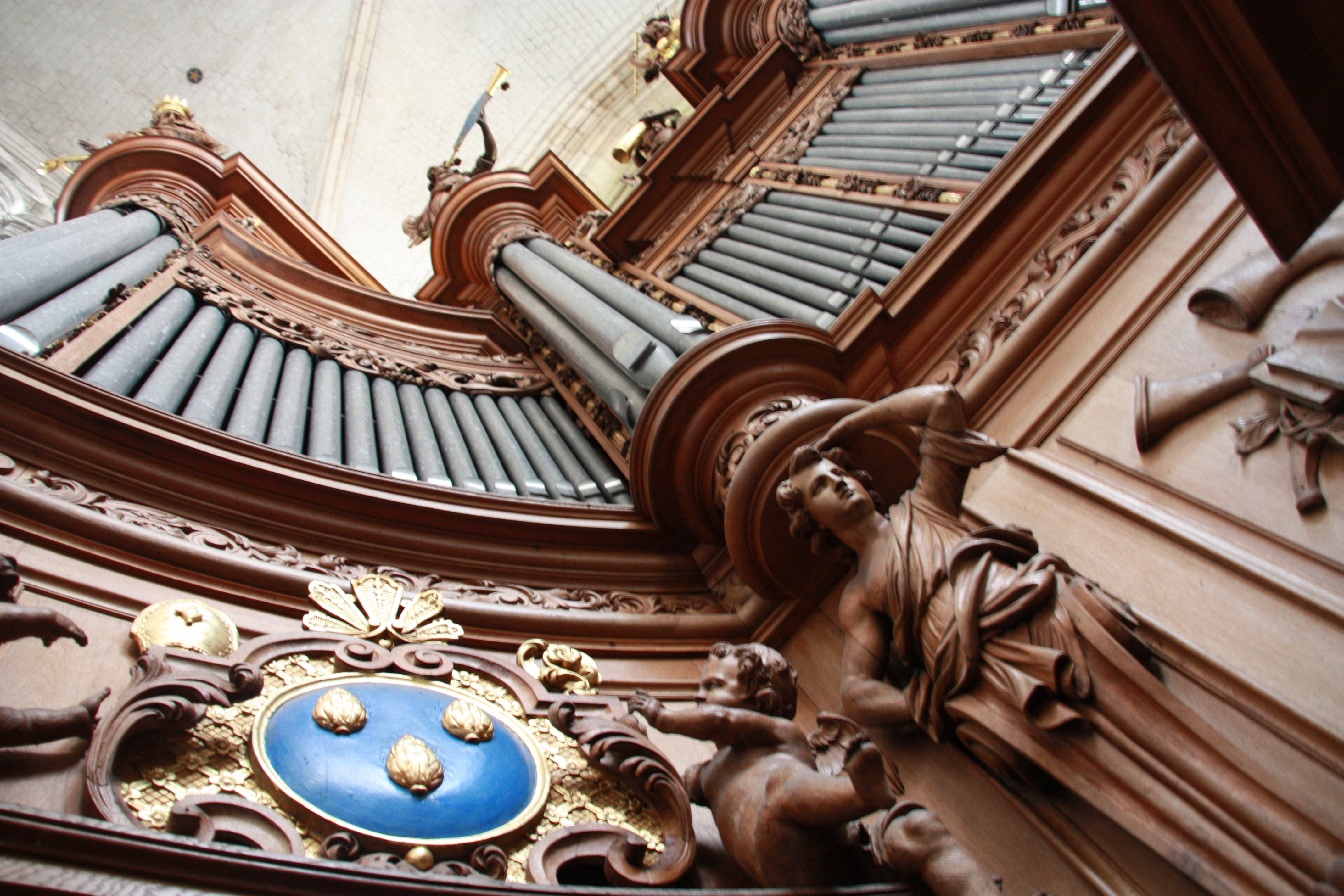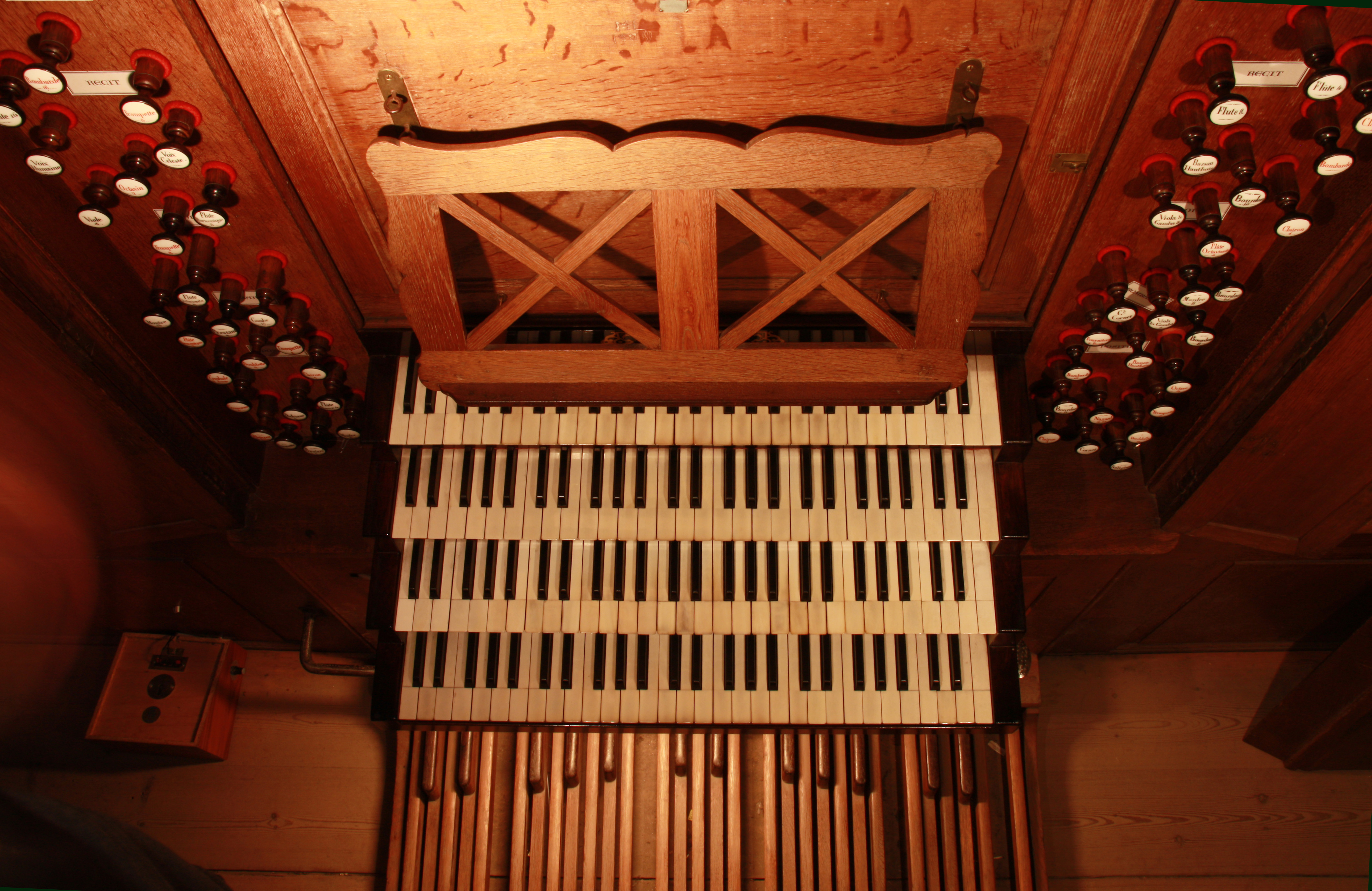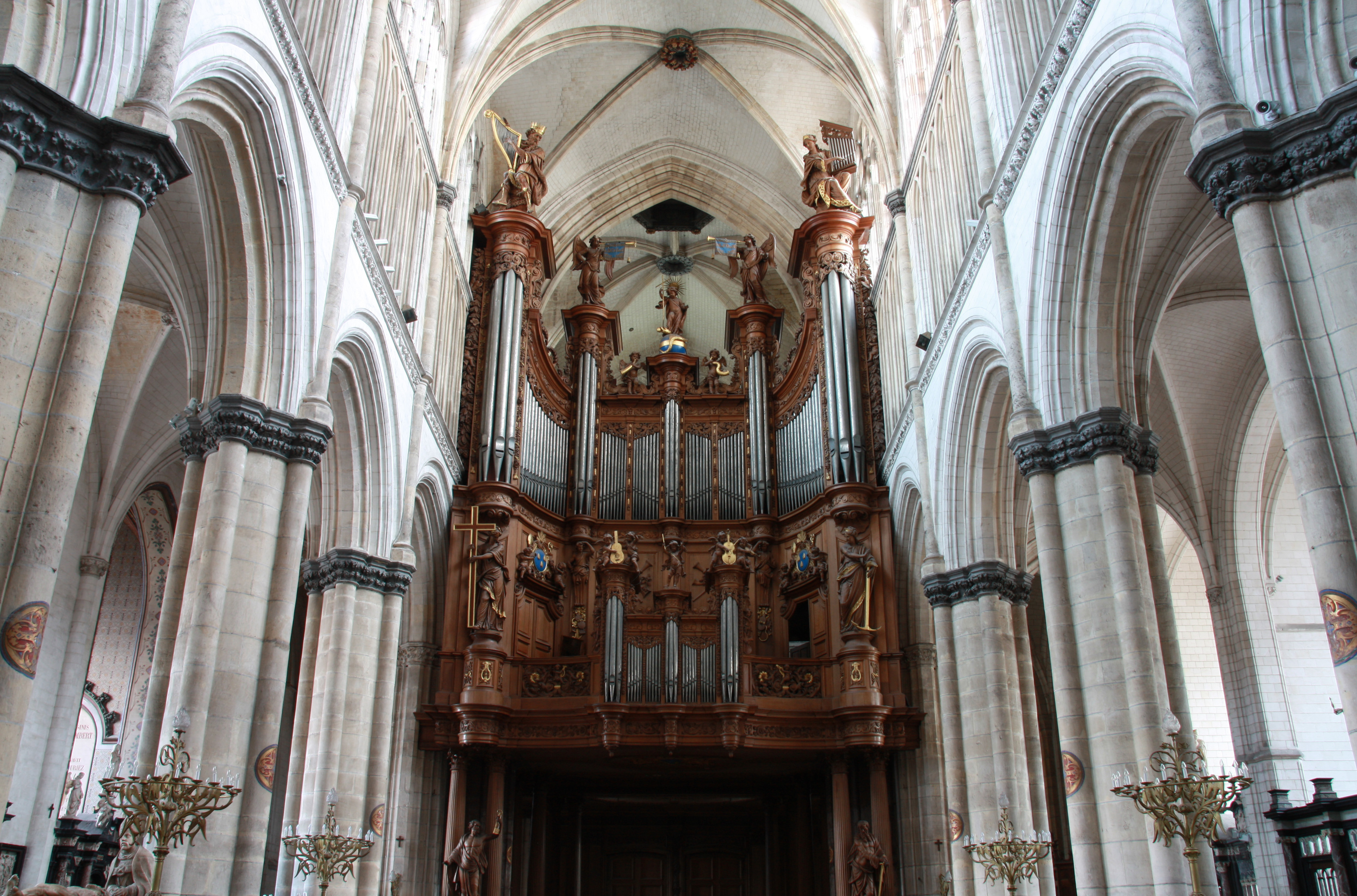Saint-Omer, Cathédrale Notre Dame
| Builder | A. Cavaille-Coll |
|---|---|
| Year | ca. 1855 |
| Period/Style | Romantic |
| Stops | 49 |
| Keyboards | 4+P |
| Keyaction | tracker/mechanical |
| Tuning | Equal at 440 Hz |
| Sampleset |
Available
 , sampled by
Sonus Paradisi
, sampled by
Sonus Paradisi
|
St. Omer is a northern French city in the department of Pas-de-Calais. The city and its cathedral share the name and the patrimony of the saint who brought Christianity into the place. There are two organs in this cathedral: the main organ on the western gallery, and a small chancel organ. The virtual instrument presented on these pages is based on the recording of the large instrument which was originally built by brothers Thomas and Jean-Jacques Desfontaines in 1717. It had 45 stops. The highly decorated organ case is a masterpiece by several members of the family of sculptors, painters and carpenters Piette and Baligand. This organ case is indeed exceptional and it provoked admiration from the time of the creation until today. Aristide Cavaillé-Coll said it was one of the most remarkable organ cases ever. Likewise, he highly praised the quality the instrumental part of this organ when inspecting it in 1852 before the restauration. However, he found out, that the time, use, later changes and mutilations of the instrument caused such a deterioration, that the instrument must be restored completely. He proposed "to bring this organ back the first position it occupied among the instruments of its century."
After a visit in St Omer in 1853, Aristide Cavaillé-Coll, made a proposal to restore, modernize and augment the instrument. In the course of the work, he was assisted by the organbuilders Parisot (voicing) and Chaff (action).Cavaillé-Coll provided new windchests, new console, he installed the Barker machine, he changed the bellows. He partially changed or added 30 stops:
5 new stops for Positif: Trompette, Clairon, Dulcianne, Montre, Salicional,
6 new stops for G.O.: Montre 16, Montre 8, Viola 16, Prestant 4, Gambe 8, Flute 4
4 new stops for Bombarde: Bombarde 16, Trompette 8, Clairon 4, Basson-hautbois 8,
All stops of Récit new,
4 new stops for Pedale: Flute 16, Bombarde 16, Trompette 8, Clairon 4.
The organ was originally pitched in a "French" tone which was a full tone lower than the normal pitch of the late 19th century. Cavaillé-Coll therefore rised the pitch of the instrument to the standard of the day. The rebuilding of the organ was finished on October 14th, 1855. The inauguration of the organ took place on June 24th, 1855, by Louis-James Lefébure-Wély, organist of the St. Sulpice church (Paris).
St. Omer large organ is therefore to be classified as still a relatively "young" Cavaillé-Coll instrument of the transitional type. The instrument is undoubtedly heading towards the symphonic style in design, voicing, technical means, but it still bears unmistakable signs of the baroque organ sound ideal, because the organbuilder reused a large portion of the previous pipe material.
The Positif is played from the lowest keyboard, and it is the division where one recognizes rather traditional baroque composition. The Grand Orgue is divided onto two manuals. The Fonds (the base stops) occupy the second keyboard, while the aliquote stops and the reeds are placed on the third manual (Bombarde). Coupled together, the division is complete. This design still echoes the fashion of the French 18th century Raisonance division; one of these can be met in the St. Maximin sample sets which is also available in the Sonus Paradisi collection. Also the Pedal is very conservative in composition. The symphonic trend manifests itself fully in the Récit expressif which is played from the top most keyboard.
The instrumental part of the organ was classified as a historical monument in 1973. The restoration of the organ was done by Haerpfer in 1985-88.
After a visit in St Omer in 1853, Aristide Cavaillé-Coll, made a proposal to restore, modernize and augment the instrument. In the course of the work, he was assisted by the organbuilders Parisot (voicing) and Chaff (action).Cavaillé-Coll provided new windchests, new console, he installed the Barker machine, he changed the bellows. He partially changed or added 30 stops:
5 new stops for Positif: Trompette, Clairon, Dulcianne, Montre, Salicional,
6 new stops for G.O.: Montre 16, Montre 8, Viola 16, Prestant 4, Gambe 8, Flute 4
4 new stops for Bombarde: Bombarde 16, Trompette 8, Clairon 4, Basson-hautbois 8,
All stops of Récit new,
4 new stops for Pedale: Flute 16, Bombarde 16, Trompette 8, Clairon 4.
The organ was originally pitched in a "French" tone which was a full tone lower than the normal pitch of the late 19th century. Cavaillé-Coll therefore rised the pitch of the instrument to the standard of the day. The rebuilding of the organ was finished on October 14th, 1855. The inauguration of the organ took place on June 24th, 1855, by Louis-James Lefébure-Wély, organist of the St. Sulpice church (Paris).
St. Omer large organ is therefore to be classified as still a relatively "young" Cavaillé-Coll instrument of the transitional type. The instrument is undoubtedly heading towards the symphonic style in design, voicing, technical means, but it still bears unmistakable signs of the baroque organ sound ideal, because the organbuilder reused a large portion of the previous pipe material.
The Positif is played from the lowest keyboard, and it is the division where one recognizes rather traditional baroque composition. The Grand Orgue is divided onto two manuals. The Fonds (the base stops) occupy the second keyboard, while the aliquote stops and the reeds are placed on the third manual (Bombarde). Coupled together, the division is complete. This design still echoes the fashion of the French 18th century Raisonance division; one of these can be met in the St. Maximin sample sets which is also available in the Sonus Paradisi collection. Also the Pedal is very conservative in composition. The symphonic trend manifests itself fully in the Récit expressif which is played from the top most keyboard.
The instrumental part of the organ was classified as a historical monument in 1973. The restoration of the organ was done by Haerpfer in 1985-88.
| Positif | Grand Orgue | Bombarde | Récit | Pedale |
|---|---|---|---|---|
| Montre 8' | Montre 16' | Flute harmonique 8' | Bourdon 16' | Flute 16' |
| Bourdon 8' | Gambe 16' | Octave 4' | Flute harmonique 8' | Flute 8' |
| Salicional 8' | Bourdon 16' | Doublette 2' | Viola de gambe 8' | Flute 4' |
| Flute douce 4' | Montre 8' | Fourniture V | Voix céleste 8' | Bombarde 16' |
| Prestant 4' | Bourdon 8' | Cymbale IV | Viole 4' | Trompette 8' |
| Dulcianne 4' | Viola de gambe 8' | Bombarde 16' | Flute octaviante 4' | Clairon 4' |
| Nasard 2 2/3' | Prestant 4' | Trompette 8' | Octavin 2' | |
| Doublette 2' | Flute octaviante 4' | Basson 8' | Bombarde 8' | |
| Plein jeu V | Grand Cornet V | Clairon 4' | Basson-Hautbois 8' | |
| Cornet V | Voix humaine 8' | |||
| Trompette 8' | Trompette 8' | |||
| Cromorne 8' | Clairon 4' | |||
| Clairon 4' |
1409831661-Couperin L - Fugue sur le Cromhorne 20 St- Omer
0:00
0:00
1402182004-Flamenco Postlude in E 2014-06-07-18-24-08 St- Omer Surroun 1
0:00
0:00
1402032460-Guilmant - Ave Maria St Omer 4 Channel mix
0:00
0:00
1653991779-6. Finale. Allegro vivace
0:00
0:00
https://www.sonusparadisi.cz/en/organs/france/st-om.html
 Pipe Organ Map
Pipe Organ Map